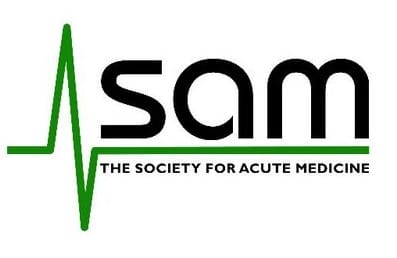The NHS England clinical review of urgent and emergency care standards began in 2018 as a way to improve outcomes and patient experience.
The latest stage of this review, the results of the consultation on proposed standards, was published today and shows broad support for a proposed bundle of measures to replace the four-hour emergency access target, however, the consultation response rate was low.
The Society for Acute Medicine supports the measures being applied to all routes for urgent and emergency care and the next steps should prioritise this.
The measures are:
1. Response times for ambulances
2. Reducing avoidable trips (conveyance rates) to Emergency Departments by 999 ambulances
3. Proportion of contacts via NHS 111 that receive clinical input
4. Percentage of ambulance handovers within 15 minutes
5. Time to initial assessment – percentage within 15 minutes
6. Average (mean) time in department – non-admitted patients
7. Average (mean) time in department – admitted patients
8. Clinically ready to proceed
9. Percentage of patients spending more than 12 hours in A&E
10. Critical time standards
Both the Royal College of Physicians and SAM are members of the clinical advisory group on these standards.
SAM has been working collaboratively with NHS England and NHS Improvement, along with other partners, on this work for the last 18 to 24 months but has repeatedly stated throughout this process that whatever we implement must work for all patients who need urgent/emergency care and not just those who present via the emergency departments.
If a target or reaction to a new target simply moves a pressure point then that does not deal with the problem causing the pressure and leaves people at risk of harm.
Now the results of the consultation have been published we have to work across the board at how we can safely pilot these measures to obtain data on how they might work in practice and then improve them if needed before final rollout across the NHS.
In a joint statement, Professor Andrew Goddard, RCP president, and Dr Sue Crossland, SAM president, said:
“We welcomed the opportunity to revisit how we measure urgent and emergency care performance and improve patient care. The ‘basket of measures’ proposed seems a good approach and it is positive that there was broad agreement.
“We understand that some want these changes to happen quickly to bring certainty to patients and the NHS, but agree with those who said they should be introduced gradually. We need a pilot phase to make sure the proposed approach works, with a focus on working together across teams.
“Most patients admitted to hospital via emergency departments (EDs) are looked after by acute medicine doctors. Close working between acute medical units and EDs will be critical to getting these standards up and running.
“The ‘Clinically ready to proceed’ metric is a good example of this: it will only work if there is close collaboration and improvement through the piloting process. The teams that admit patients must be involved in decisions about the next steps before a patient is deemed ‘clinically ready to proceed’ as it has an impact on the management and subsequent place of care for that patient.
“Involving all the appropriate clinicians will enhance collaborative working in the NHS, and improve patient experience and clinical outcomes. We all have a role in ensuring patients are in the safest place in the hospital for a particular point in their admission, that corridor care is avoided at all costs and that hospital processes are driven by patient need, not process targets.”
